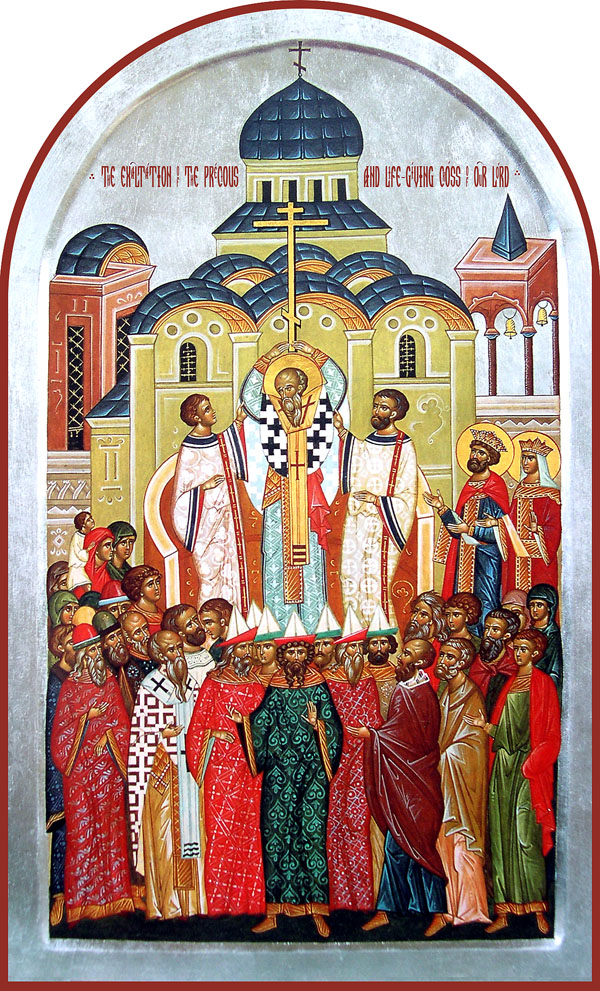Liturgical Development

During his long campaign against the Persians, Emperor Heraclius recovered the True Cross of Christ, which the Persians had taken from Jerusalem in 614. On March 21, 631, he solemnly brought it to Golgotha in Jerusalem. This action dramatically helped to spread the celebration of the Feast of the Exaltation of the Cross (September 14) throughout the Christian Empire; until then this feast was celebrated mostly only in Jerusalem (see Worship).
The Quinisext Council decreed that on the weekdays of Great Lent the Liturgy of the Presanctified Gifts should be served instead of the Eucharistic Divine Liturgy (Canon 52). It called for Christians to honor Christ’s resurrection by refraining from penitential kneeling on Sundays (Canon 90). This council forbade all laymen except the Emperor from entering the sanctuary of the church building (Canon 69), and it forbade the sacramental marriage of Orthodox Christians with non-Orthodox (Canon 72). It enjoined those who sing in church to refrain from “undisciplined vociferations” and from using “any melodies which are incongruous and unsuitable for the Church” (Canon 75). And it called for the excommunication of people who for no good reason miss the Divine Liturgy for “three consecutive Sundays” (Canon 80).
Canon 55 of the Quinisext Council reveals a significant difference in practice between East and West concerning fasting during Great Lent, and it mandates that the Roman Church must correct her non-traditional custom:
Since we understand that in the city of the Romans, in the holy fast of Lent they fast on the Saturdays [meaning abstinence from all food, and no celebration of the Divine Liturgy], contrary to the ecclesiastical observance which is traditional, it seemed good to the holy synod that also in the Church of the Romans the canon [Canon 66 of the ancient Apostolic Canons] shall immovably stand fast which says: “If any cleric shall be found to fast on a Sunday or Saturday (except on one occasion only [i.e., Great and Holy Saturday]) he is to be deposed; and if he is a layman he shall be cut off.”
Another difference in practice between East and West is discussed in Canon 82, which addresses how Christ is to be depicted in the holy icons:
In some pictures of the venerable icons, a lamb is painted to which the Precursor [i.e., Saint John the Baptist] points his finger, which is received as a type of grace, indicating beforehand through the Law, our true Lamb, Christ our God. Considering therefore the ancient types and shadows to be symbols of the truth and patterns given to the Church, we prefer ‘grace and truth’ [Jn 1.17], receiving it as the fulfillment of the Law. In order therefore that ‘that which is perfect’ may be delineated to the eyes of all, at least in colored expression, we decree that the figure in human form of the Lamb who takes away the sin of the world, Christ our God, be henceforth exhibited in images, instead of the ancient lamb, so that all may understand by means of it the depths of the humiliation of the Word of God, and that we may recall to our memory His life in the flesh, His passion and salutary death, and His redemption which was wrought for the whole world
This canon will become even more relevant in the next century, in the era of Iconoclasm, for here is clear proof of the Church’s official acceptance of iconography—in a declaration from the second half, so to speak, of the Sixth Ecumenical Council.
